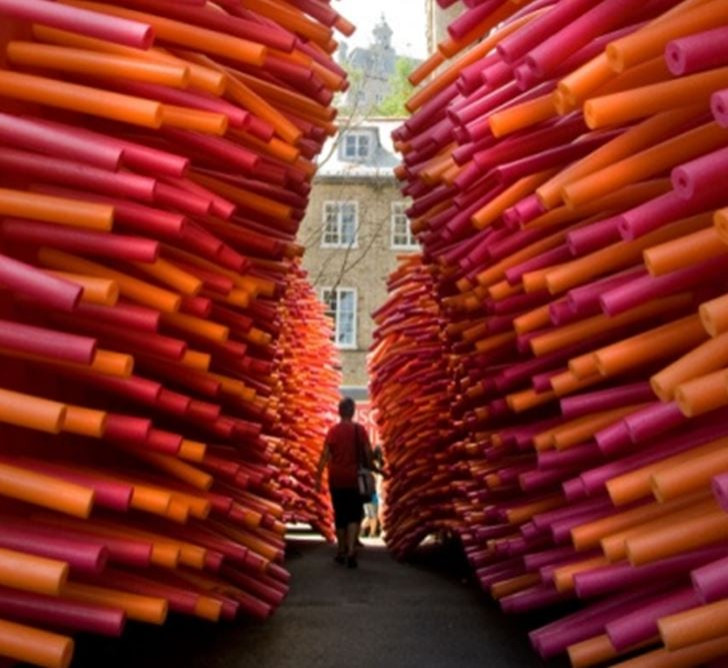Public Art – Part 2

Which expertise architects and landscape designers could bring to public art projects?
It is extremely complex to create an harmonic connection and synergy between public art, architecture and landscape design. A misunderstanding of the social and cultural environment could determine a failure for interesting artistic and territorial marketing initiatives.
A good example is the huge ring-shaped walkway at Flint Castle (winning competition proposal by the practice George King Architects), whose interesting plans have been halted by the Welsh government following a backlash against the design, seen as a symbol of “oppression, subjugation and injustice”. The project was to be part of wider regeneration plans for the area around the castle, but the petition against the project attracted almost 10,500 signatures.
Other times, gigantic architectural sculptures like the Angel of the North, which divided the public opinion at the beginning – and attracted press interest – are gradually accepted and recognised by residents and visitors as expression of the visual local identity. Maybe because public art has to deal with human emotions and the ability to convey them in a spatial and cultural project.
Architects can surely help with future art installations by insuring they are integrated into a project, which may avoid negative criticism, neglect or failure. It might be the case of the Instagram-friendly pink tunnel in Quebec City, a tunnel formed from bright pink partitions and a giant paper aeroplane. Les Passages Insolites (‘Unusual Passages’) programme includes nine installations by various architects and architects, scattered across the Canadian city’s downtown area. The most noticeable are a set of pink structures connected to the 17th-century Royal Battery fortifications facing the St Lawrence River, which appear to penetrate the historic stone ramparts.
Another highlight is the vibrant tent-like installation covered in wind-reactive inflatable pockets in the mountains of France. Located on a hill in the countryside of a small French village called Victor-Saint-la Riviere, the installation is intended as a response to La Croix Perdue (or “the lost cross”), which was originally placed at the site to mark the death of a woman who went missing and eventually perished during a heavy rainstorm in the area around 200 years ago. The effect is a kind of secular cathedral of the wind, that preserves the feeling of nature and makes it visible for the all community around the hill.
One of the quirkier pieces converts a normal alleyway into a tunnel bursting with swimming noodles!
Public art, in conclusion, has to deal with common sense, community, heritage preservation, legacy, aspirations. It could become a delicate, powerful and beloved landmark or being opposed. This could be when it contrasts the historical background or due to a wrong scale. Because of this reason the architectural approach of reading the context properly in all its aspects is a crucial skill. For an artistic project it is essential to catch the true essence of a place and its potential with a strong visual identity.
